A Breath of Fresh Air: Exploring Greenhouse Wellness
Have you ever dreamed of a space where you can reconnect with nature, improve your well-being, and contribute to a healthier planet all at once? What if I told you that such a haven exists, and it might be closer than you think? The answer lies in the rapidly growing concept of greenhouse wellness.
These innovative structures are sometimes known as greenhouse sheds. Which go beyond the traditional gardening space. They offer a unique blend of environmental and personal benefits. They do this by, creating a sanctuary for physical and mental health while promoting sustainable practices. But how do these green havens contribute to a healthier planet and you?
In this article, we will explore the world of greenhouse well-being. We will explore three key ways these structures benefit our environment, from reducing our carbon footprint to promoting biodiversity. We will also uncover the personal advantages. Which will include stress reduction, improved air quality, and increased access to fresh, homegrown food. Get ready to discover a path towards a greener, healthier future.
Exploring Greenhouse Wellness: A Path to Holistic Well-being
Greenhouse wellness structures offer a unique way to connect with nature and improve your overall health. These spaces provide a calm environment for relaxation, exercise, and even growing your healthy food. Let’s explore what makes these structures so special and how you can create your heaven.
What is a Greenhouse Wellness Structure?
Imagine a dedicated space filled with sunlight, lush greenery, and the gentle sounds of nature. That is the essence of a greenhouse wellness structure. These structures come in various forms, each offering its charm:
- Geodesic Domes: These futuristic-looking domes maximize sunlight exposure and offer a spacious, open feel.

- Solariums: Often attached to homes, solariums provide a seamless transition between indoor and outdoor living, perfect for enjoying the sun’s warmth year-round.
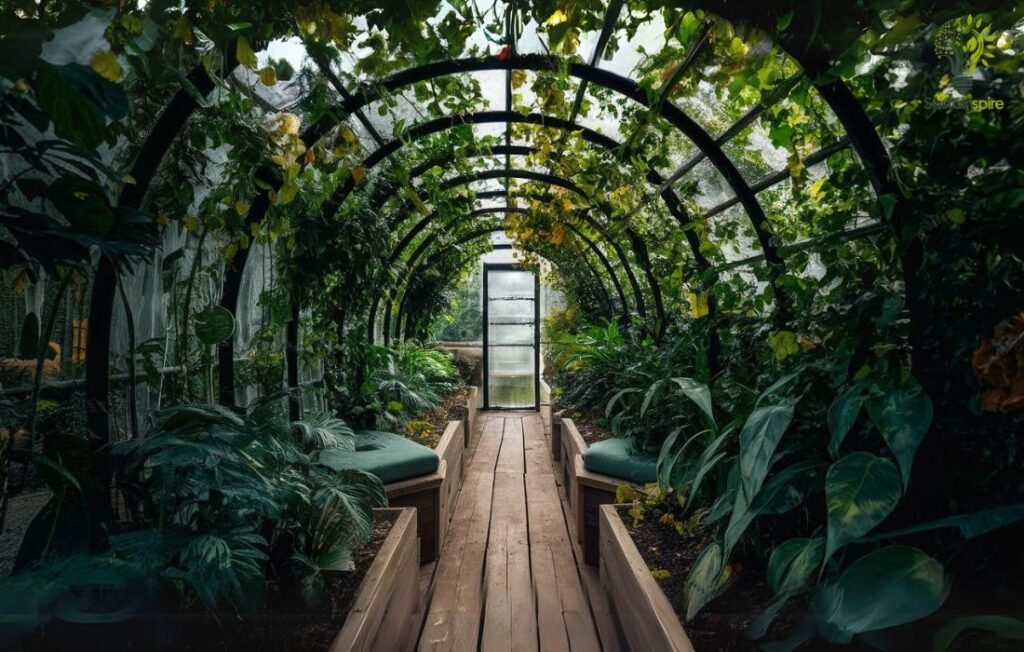
- Greenhouses: Traditional greenhouses can be transformed into wellness havens by incorporating comfortable seating, water features, and areas for activities like yoga or meditation.
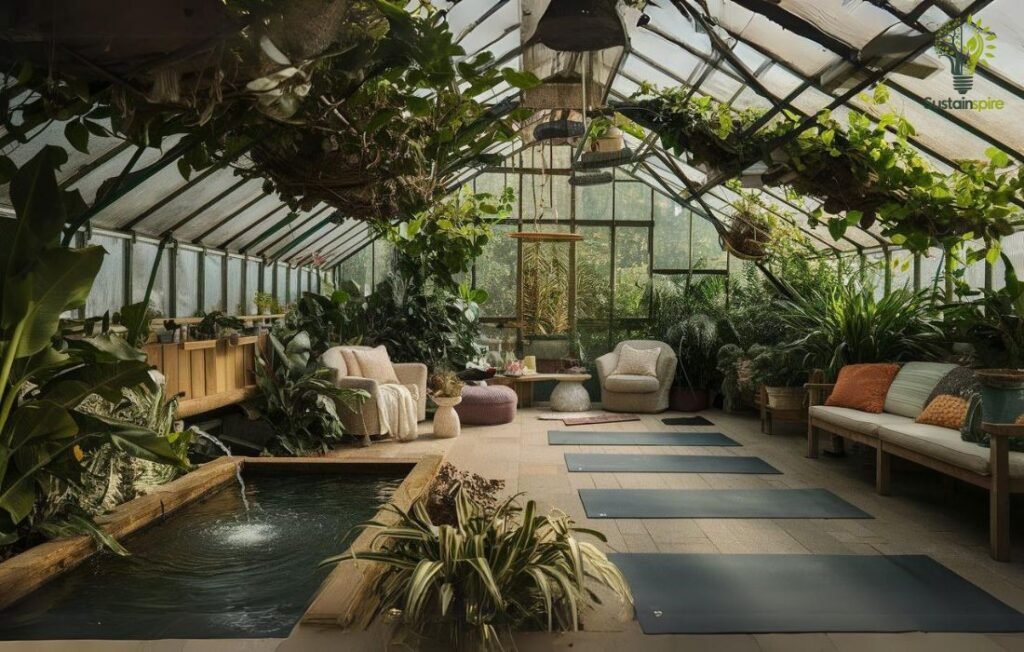
Creating Your Own Heaven of Calm: Greenhouse Shed Considerations
Your greenhouse wellness space is a private haven. Design it to reflect your unique needs and preferences. Here are some key elements to consider:
- Natural Light: Maximize the use of natural light to create a bright and uplifting atmosphere.
- Ventilation: Ensure proper airflow to maintain a comfortable temperature and prevent humidity build-up.
- Plants: Choose a variety of plants that thrive in your climate and bring you joy.
- Sustainable Materials: Opt for eco-friendly materials like reclaimed wood and recycled glass to minimize your environmental impact.
- Comfort and Functionality: Incorporate comfortable seating, calming water features, and areas for activities that promote well-being.
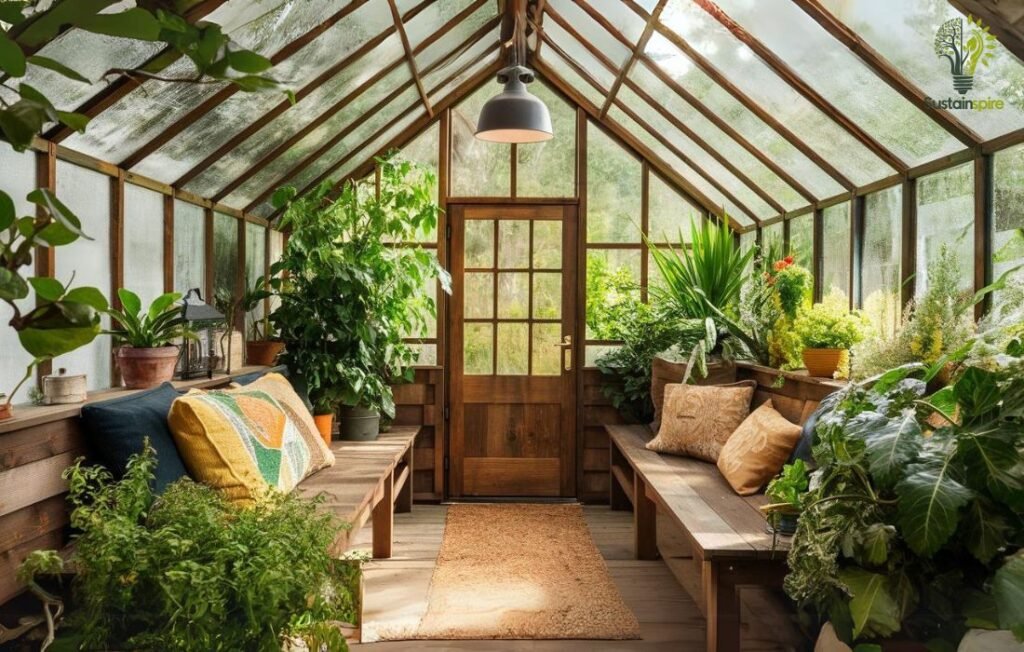
How Greenhouse Wellness Structures Benefit Our Health
Spending time in nature is good for both your mind and body. Greenhouse wellness structures offer a unique way to connect with nature and improve your overall well-being. Let’s explore how these green havens can benefit your health.
Improved Mental Well-being through Nature
Being in nature has a calming effect on the mind. Studies have shown that spending time outdoors can lower stress levels, reduce anxiety, and improve mood. A greenhouse provides a peaceful escape where you can relax and de-stress. Immersing yourself in the sights and sounds of nature allows you to unwind and find inner peace.
Many people find that practicing mindfulness and meditation in a greenhouse setting enhances their experience. The natural environment provides a sense of peace, making it easier to focus on the present moment and quiet the mind.
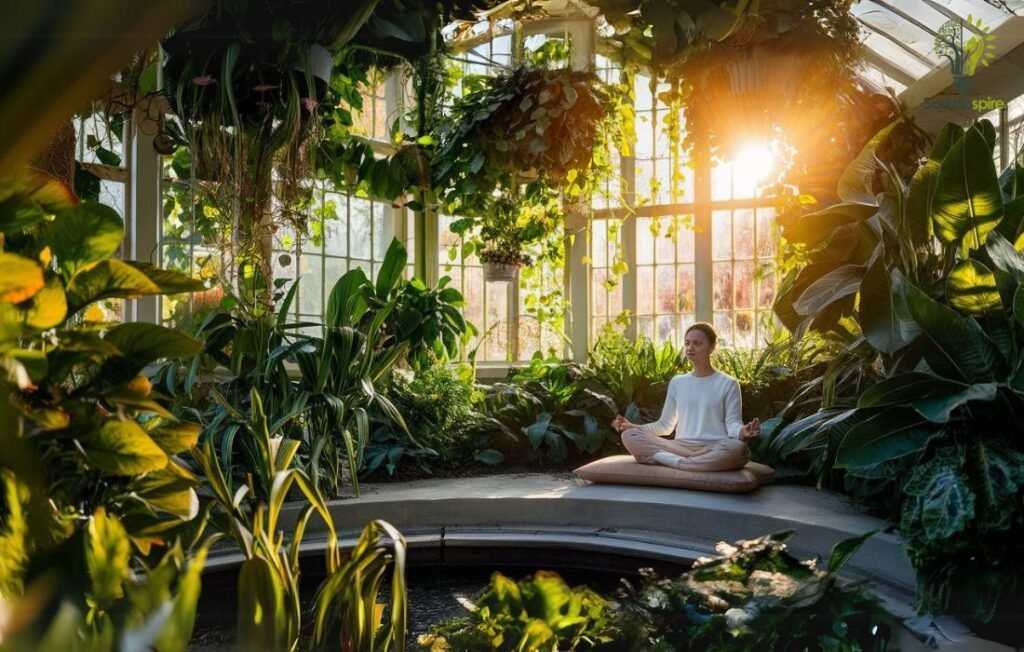
Enhancing Physical Health and Energy
Greenhouses offer more than just mental benefits; they also promote physical health. Tending to plants and engaging in gardening activities provides gentle exercise and keeps you active. Plus, growing your own fruits and vegetables gives you access to fresh, nutritious food. This healthy diet contributes to overall physical well-being.
Sunlight exposure is another advantage of spending time in a greenhouse. Sunlight helps our bodies produce vitamin D, which is essential for bone health and a strong immune system. Soaking up some sun in your greenhouse can do wonders for your physical health.
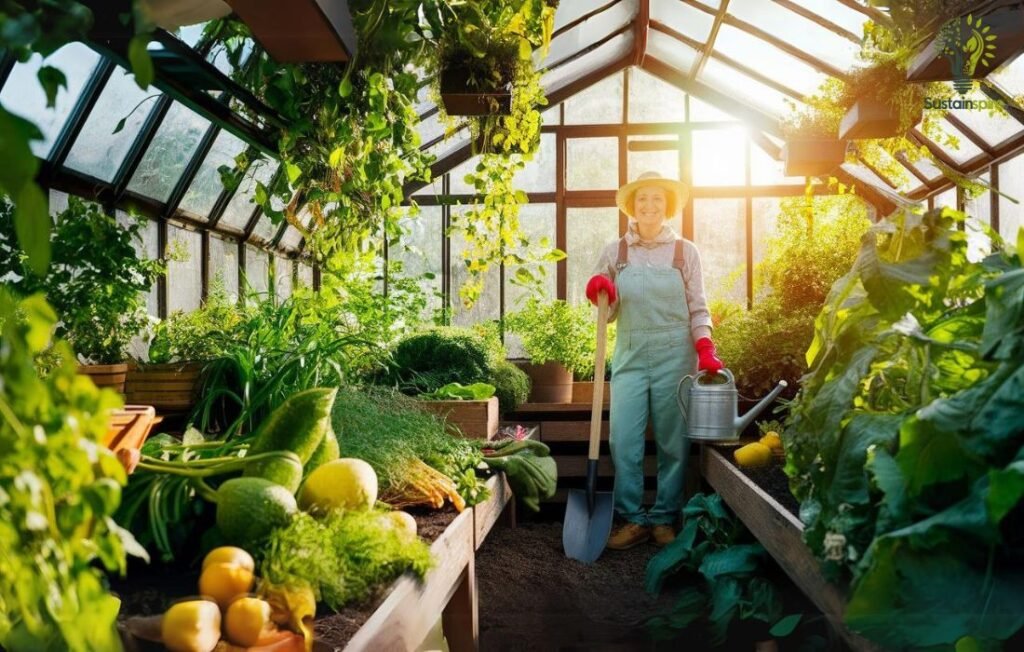
Environmental Benefits of Greenhouse Well-being
Greenhouse gardening isn’t just a hobby; it’s a way to connect with nature and contribute to a healthier planet. Let’s explore how greenhouse wellness promotes sustainable living practices and fosters biodiversity.
Promoting Sustainable Living Practices
Promoting sustainable living practices through greenhouse well-being offers significant environmental benefits. A few of these practices are as explained below:
1. Homegrown Food – Greenhouse Wellness
Growing your own food in a greenhouse significantly reduces your carbon footprint. Instead of relying on produce shipped from far away, you can enjoy fresh, local vegetables and fruits. Plus, greenhouse gardening allows you to control how your food is grown, avoiding harmful pesticides and chemicals.
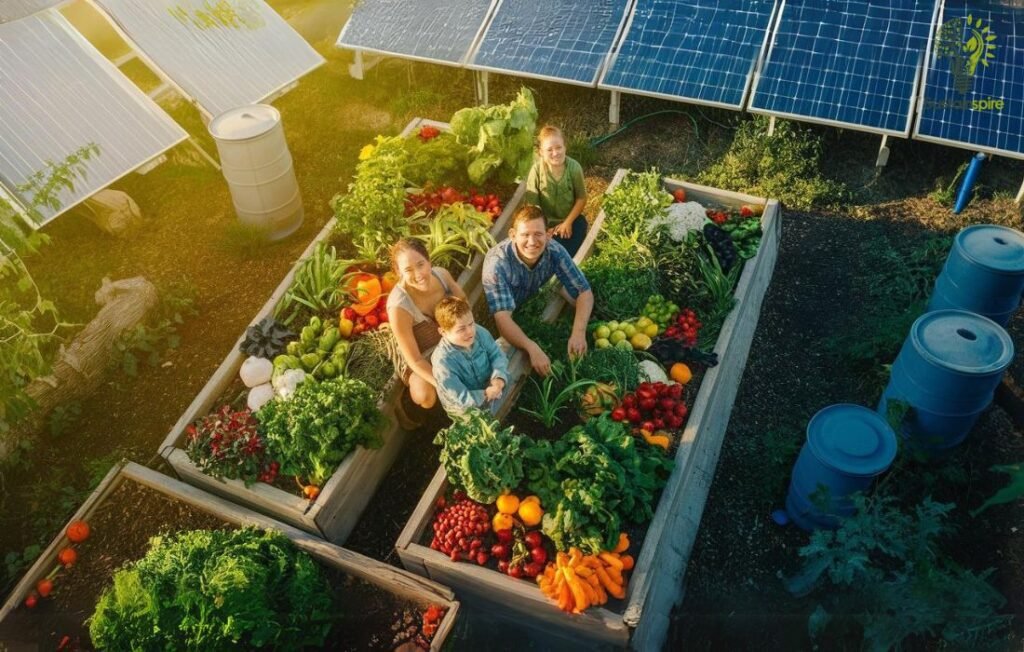
2. Renewable Energy Options
Greenhouses also offer opportunities to explore energy-efficient and renewable energy options. Think solar panels to power your greenhouse lights or rainwater harvesting systems to conserve water. These practices not only benefit the environment but can also save you money in the long run.
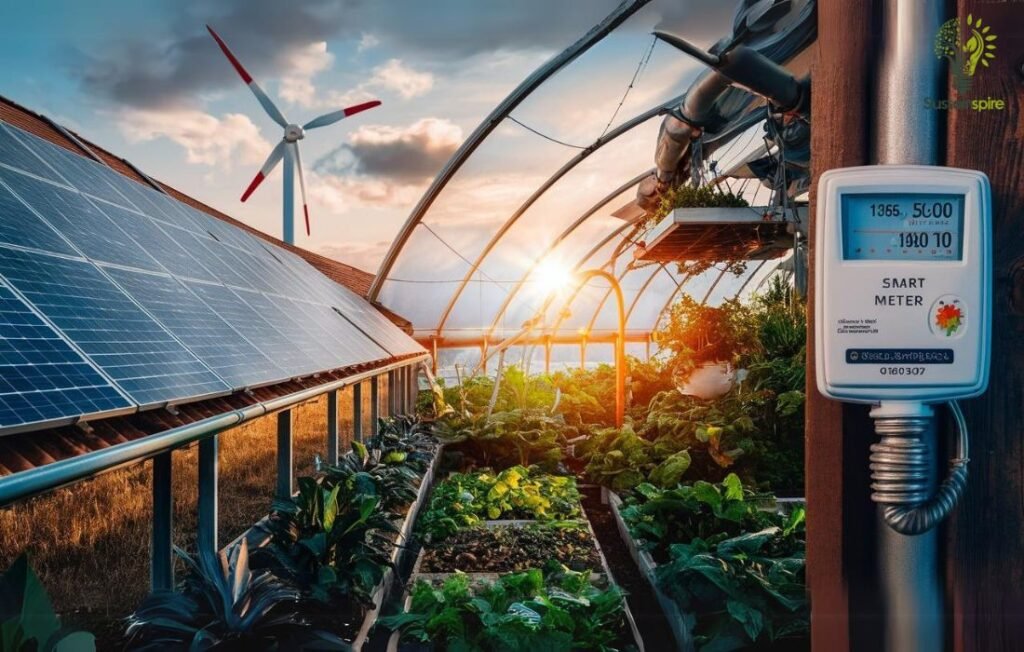
3. Water Conservation Techniques
Speaking of water, greenhouses can be surprisingly efficient when it comes to water usage. Techniques like drip irrigation deliver water directly to plant roots, minimizing waste. Additionally, the controlled environment of a greenhouse reduces water evaporation compared to traditional outdoor gardening.
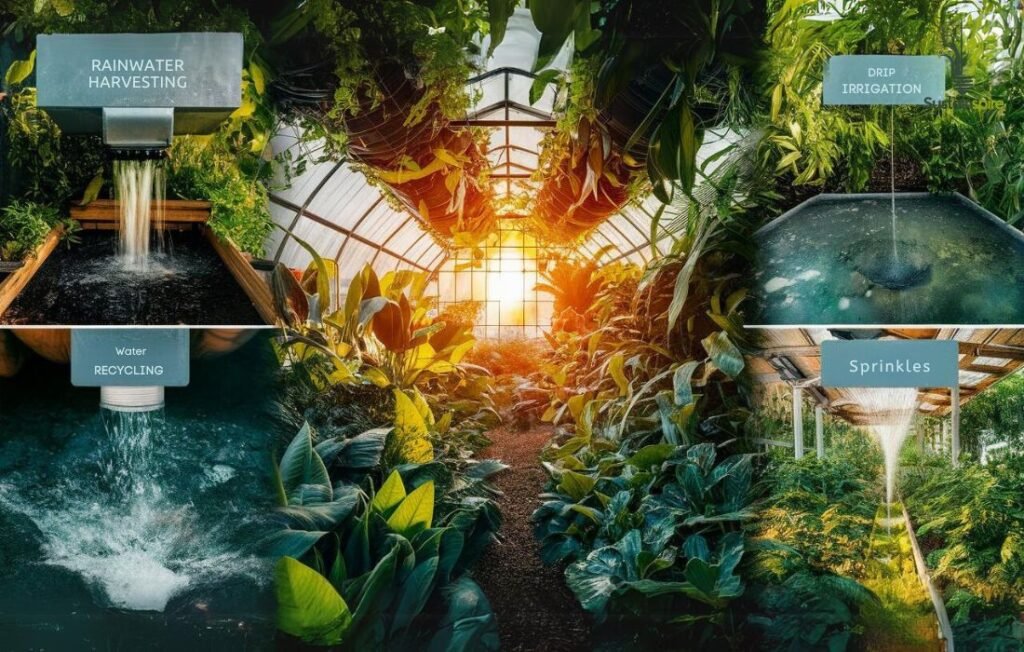
Fostering Biodiversity and Supporting Pollinators
Greenhouse well-being offers environmental benefits such as fostering biodiversity and supporting pollinators like bees, insects, and birds. They play an important role in ecosystem health and food production. Let us explore it.
1. Habitat for Beneficial Insects and Birds
A greenhouse can become a haven for beneficial insects and birds. By creating a welcoming habitat, you’ll attract pollinators that are essential for healthy plant growth and a thriving ecosystem. Ladybugs, for example, are natural predators of aphids and other garden pests.
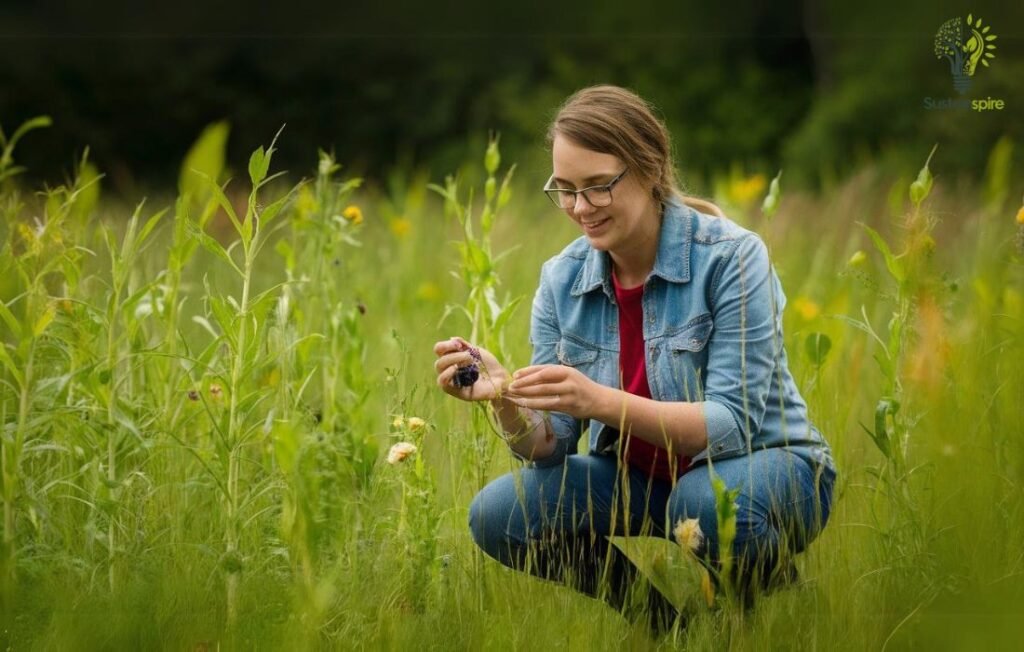
2. Supporting Local Ecosystems
Growing native plants in your greenhouse further supports local ecosystems. These plants provide food and shelter for native wildlife. They also promote biodiversity and a balanced environment. Remember, a healthy ecosystem is a happy ecosystem, which means a healthier planet for us.
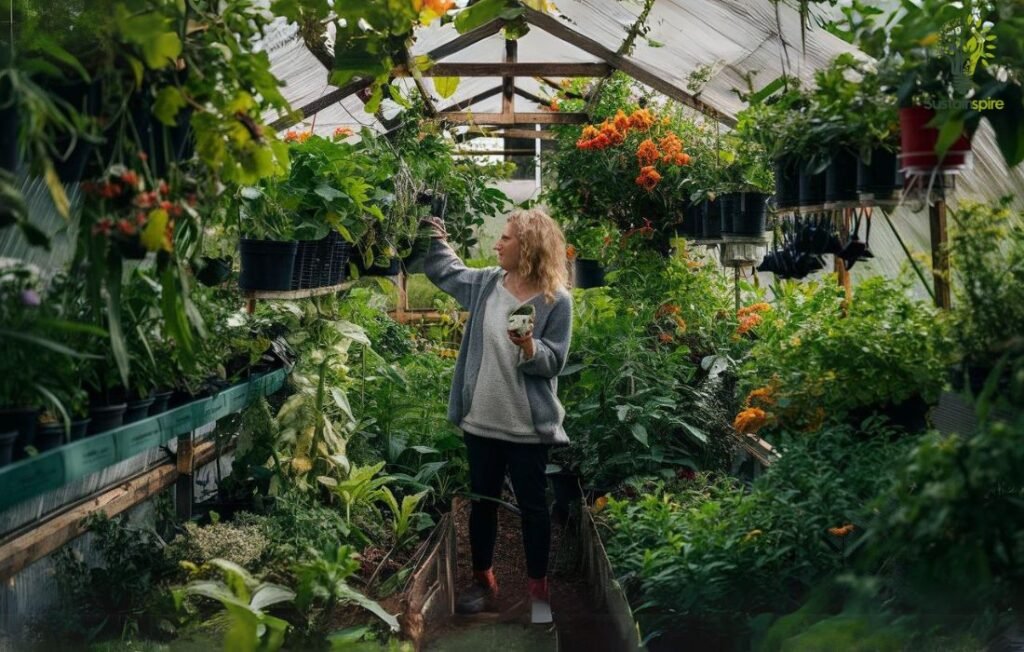
Activities and Practices for Your Greenhouse
A greenhouse offers a unique space to connect with nature and improve your well-being. Beyond growing plants, it can become a sanctuary for relaxation and personal growth. Let’s explore some ways to transform your greenhouse into a haven for health and happiness.
Gardening for Health and Happiness
Did you know that gardening can be therapeutic? It’s true! Horticultural therapy uses gardening activities to improve mental and physical health. Getting your hands dirty and nurturing plants can reduce stress, boost mood, and even improve motor skills.
Starting your own greenhouse garden is easier than you think. Begin by choosing plants that match your wellness goals. For example, fragrant herbs like lavender and chamomile can promote relaxation. While vibrant flowers like sunflowers can uplift your spirits. Tending to your plants provides a sense of purpose and accomplishment, contributing to overall well-being.

Relaxation and Mindfulness Techniques
Your greenhouse can be more than just a garden; it can be a peaceful escape from the daily grind. Create a serene atmosphere with comfortable seating, calming colors, and gentle lighting. It can be the perfect environment for relaxation and mindfulness practices. The gentle sounds of nature and the sun’s warmth create a naturally calming atmosphere.
Transform your greenhouse into a serene heaven. Add comfortable seating, soft lighting, and perhaps even a small water feature to enhance the peaceful setting. This peaceful space is ideal for practicing yoga or meditation. Which allows you to connect with your breath and find inner peace amidst the beauty of nature.
Nature’s music and scents can further enhance your relaxation experience. The gentle rustling of leaves, the chirping of birds, and the soothing sound of running water create a harmony of calm. Adding aromatherapy with essential oils like lavender or eucalyptus can also help. It can enhance the sensory experience and encourage deeper relaxation.
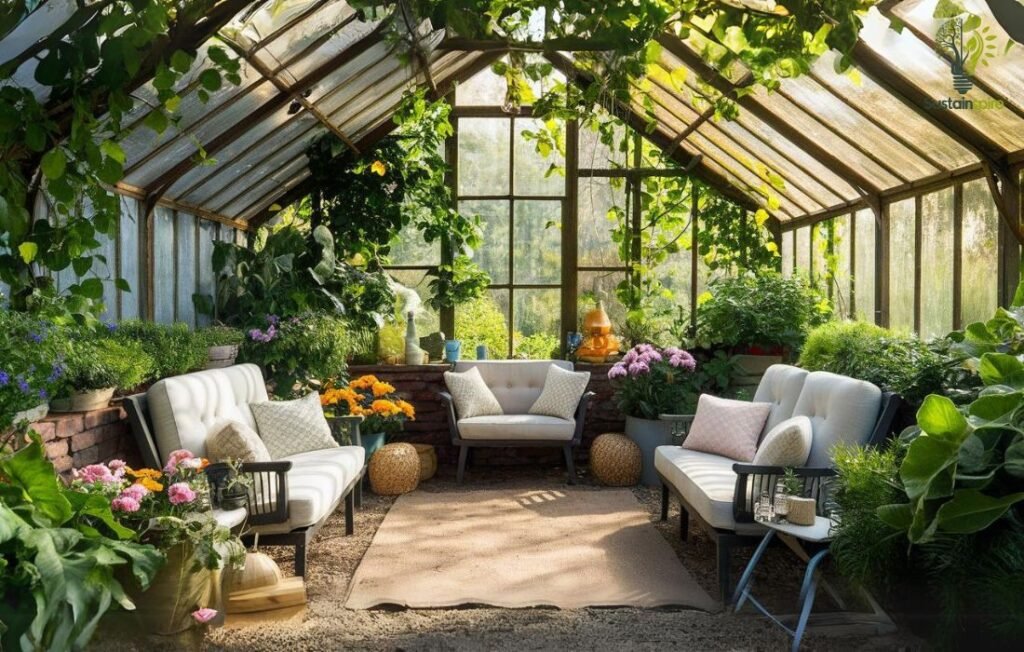
Conclusion:
As we’ve explored, greenhouse wellness structures. These structures offer a unique and holistic approach to well-being. Which allows us to reconnect with nature, and improve our physical and mental health. It also embraces sustainable living practices. By creating your heaven of calm, you can cultivate a sense of peace while reaping the benefits of nature.
Investing in greenhouse well-being is an investment in yourself and the planet. It is a chance to reduce your carbon footprint, support local ecosystems, and create a healthier sustainable future. So, start planning your own space and discover the transformative power of nature. Share your thoughts and experiences in the comments below. Let us inspire each other to grow a greener, and healthier future.
Frequently Asked Questions
Small home greenhouses typically cost between USD 2,000 and USD 10,000. Basic elements and their cost range:
- Frame (USD 500 - USD 2,000): Materials like aluminum, wood, or PVC
- Covering (USD 200 - USD 1,000): Options include polycarbonate panels, polyethylene film, or glass
- Foundation (USD 100 - USD 500): Gravel, concrete, or wood base
- Ventilation (USD 50 - USD 200): Roof vents, fans, or windows
- Door (USD 100 - USD 500): Hinged or sliding door
Warm Climates: Tomatoes, peppers, cucumbers, eggplant, herbs (basil, oregano, thyme)
Temperate Climates: Lettuce, spinach, kale, carrots, radishes
Cool Climates: Broccoli, cauliflower, Swiss chard, beets, green onions
Consider using renewable energy sources like solar panels, collecting rainwater for irrigation, implementing natural pest control methods, and composting plant waste.







